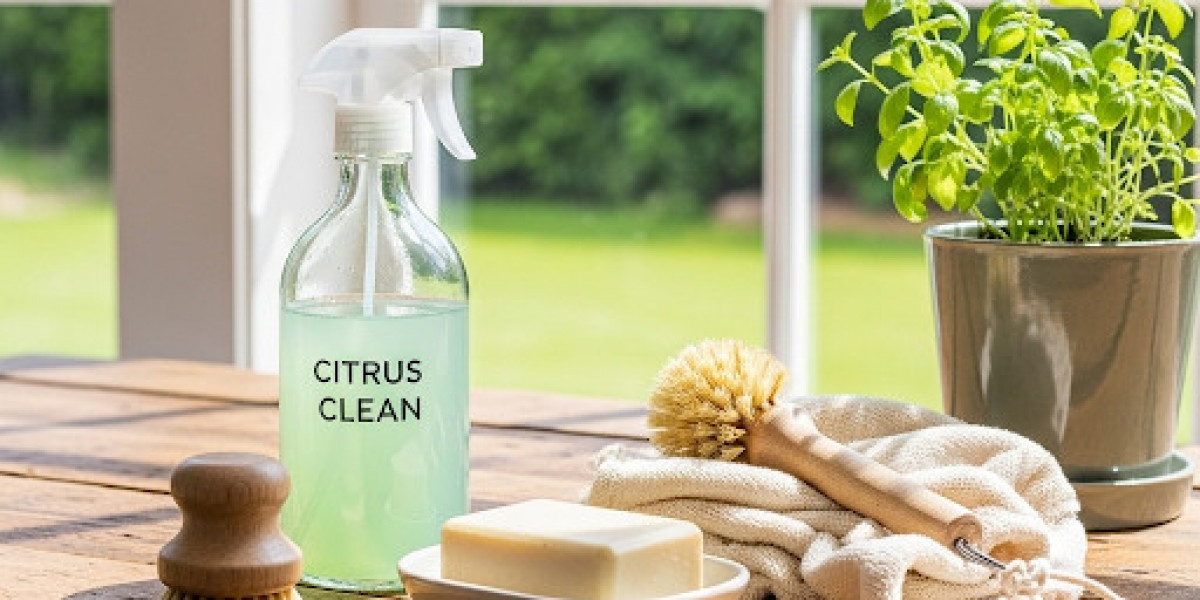In today’s world, where environmental consciousness is more important than ever, eco-friendly cleaning has emerged as a powerful way to reduce our carbon footprint while keeping our homes spotless and safe. From cutting down on harmful chemicals to using biodegradable materials, sustainable cleaning practices not only protect the planet but also contribute to a healthier living environment.
This comprehensive guide explores the benefits of eco-friendly cleaning, the best natural cleaning products, simple DIY recipes, and tips for transitioning to a greener routine.
What is Eco-Friendly Cleaning?
Eco-friendly cleaning, also known as green cleaning, refers to the use of cleaning methods and products that are safe for human health and the environment. Unlike conventional cleaning supplies that often contain toxic ingredients, eco-friendly alternatives are typically made from natural, biodegradable, and non-toxic substances.
These products avoid pollutants that can harm indoor air quality, contaminate water supplies, or cause long-term environmental damage. By adopting green cleaning practices, individuals can reduce their ecological impact while promoting personal and planetary well-being.
Why Eco-Friendly Cleaning Matters
1. Healthier Home Environment
Traditional cleaning products often contain harsh chemicals like ammonia, chlorine, and phthalates, which can trigger allergies, asthma, and skin irritation. Eco-friendly cleaners reduce exposure to these toxins, leading to improved indoor air quality and fewer health risks, especially for children and pets.
2. Protects the Environment
Conventional cleaning chemicals can pollute waterways, harm aquatic life, and contribute to air pollution. Green cleaning products are typically biodegradable and non-toxic, minimizing harm to ecosystems and wildlife.
3. Reduces Waste
Eco-conscious cleaning involves using reusable cloths, refillable containers, and bulk products, which significantly cut down on plastic waste and single-use packaging. This helps reduce landfill overload and supports the circular economy.
4. Cost-Effective
While some eco-friendly brands may seem pricier upfront, many green cleaning solutions—especially DIY recipes—are affordable and made with common household ingredients like vinegar and baking soda. Reusable tools also save money over time.
Common Harmful Chemicals to Avoid
When choosing cleaning products, look out for these toxic ingredients often found in traditional cleaners:
Phthalates – Used in fragrances, linked to hormone disruption.
Ammonia – A powerful cleaner that can irritate the respiratory system.
Chlorine – Found in bleach; can cause skin and eye irritation.
Triclosan – An antibacterial agent associated with antibiotic resistance.
Sodium Hydroxide – Corrosive and harmful to skin and eyes.
Natural Alternatives and Ingredients to Look For
Eco-friendly cleaning products are often made with ingredients that are safe, biodegradable, and plant-based. Here are some commonly used green ingredients:
Vinegar – A natural disinfectant and deodorizer.
Baking Soda – Great for scrubbing and removing odors.
Lemon Juice – A natural whitener and antibacterial agent.
Castile Soap – A biodegradable soap made from vegetable oils.
Essential Oils – Such as tea tree, lavender, or eucalyptus, for natural scent and antimicrobial properties.
Top Eco-Friendly Cleaning Products (Brands to Consider)
There are many trusted brands that offer green alternatives to traditional cleaning products. Here are a few popular eco-friendly cleaning brands:
Seventh Generation – Offers biodegradable, plant-based formulas.
Method – Known for stylish packaging and eco-conscious ingredients.
Ecover – Uses sustainable sourcing and low-impact manufacturing.
Puracy – Non-toxic, cruelty-free, and highly effective.
Mrs. Meyer’s Clean Day – Aromatic and plant-based options.
Blueland – Tablet-based refills to reduce plastic waste.
DIY Eco-Friendly Cleaning Recipes
Making your own cleaning products at home is an excellent way to save money and reduce your environmental impact. Here are some simple and effective DIY cleaning recipes:
1. All-Purpose Cleaner
Ingredients:
1 cup white vinegar
1 cup water
10–15 drops of essential oil (e.g., lemon or tea tree)
Instructions:
Combine in a spray bottle and shake well. Use on counters, tiles, and glass surfaces.
2. Natural Glass Cleaner
Ingredients:
2 cups water
½ cup white vinegar
¼ cup rubbing alcohol (70%)
Optional: few drops of citrus essential oil
Instructions:
Spray on glass or mirrors and wipe with a microfiber cloth for a streak-free shine.
3. Toilet Bowl Cleaner
Ingredients:
½ cup baking soda
½ cup white vinegar
Instructions:
Sprinkle baking soda in the bowl, pour vinegar over it, let it fizz, then scrub and flush.
4. Carpet Deodorizer
Ingredients:
1 cup baking soda
10 drops of lavender or eucalyptus oil
Instructions:
Mix and sprinkle over carpets. Let sit for 15 minutes, then vacuum thoroughly.
Eco-Friendly Cleaning Tools
Switching to green cleaning isn't just about the products you use—tools matter too. Here are some eco-friendly cleaning tools to consider:
Reusable microfiber cloths instead of paper towels
Natural sponges or biodegradable scrub brushes
Refillable spray bottles made from glass or recycled plastic
Reusable mop heads and washable pads
Compostable cleaning wipes made from bamboo or cotton
How to Transition to Green Cleaning
Making the switch to eco-friendly cleaning doesn't have to be overwhelming. Here are easy steps to get started:
1. Use Up What You Have
Before buying new products, use your existing supplies to avoid waste. Then replace them with greener options.
2. Start with Basics
Focus on a few core items like an all-purpose cleaner and dish soap. Expand gradually to laundry and bathroom cleaners.
3. Read Labels Carefully
Look for certifications like:
USDA Organic
Green Seal
EPA Safer Choice
Leaping Bunny (cruelty-free)
4. Go Refillable
Support companies that offer refill stations or concentrates to reduce packaging waste.
5. Educate Your Household
Encourage your family or roommates to get involved. Green cleaning is a team effort.
Challenges of Eco-Friendly Cleaning (and How to Overcome Them)
1. Perception of Ineffectiveness
Some people believe natural cleaners don’t work as well. In reality, most green products are highly effective when used correctly. Make sure to follow directions and give natural ingredients time to work.
2. Higher Upfront Costs
Eco-friendly products can be more expensive initially, but they often last longer. Buying in bulk or making DIY cleaners can help cut costs.
3. Limited Availability
Not all stores carry green products, but many are available online or at natural health stores. Shopping directly from brands can also provide discounts.
Eco-Friendly Cleaning in Commercial Spaces
Businesses and offices can benefit significantly from green cleaning too. Commercial cleaning companies now offer green-certified services that protect employee health, improve indoor air quality, and contribute to corporate sustainability goals.
Conclusion: A Cleaner Future Starts at Home
Eco-friendly cleaning is more than a trend—it's a responsible lifestyle choice that protects our homes, health, and the environment. By switching to natural, biodegradable cleaning products and sustainable cleaning habits, we can significantly reduce our environmental footprint and create safer living spaces.
Whether you're making your own cleaners from scratch or purchasing eco-conscious brands, every step toward green cleaning contributes to a cleaner, greener future.
Frequently Asked Questions (FAQs)
1. Are eco-friendly cleaners as effective as traditional ones?
Yes, many natural cleaners are just as effective when used correctly. Some even outperform chemical cleaners without the harmful side effects.
2. Can I make eco-friendly cleaners at home?
Absolutely! Common ingredients like vinegar, baking soda, and essential oils can be combined to create safe and effective cleaners for nearly every household surface.
3. What certifications should I look for in green cleaning products?
Look for trusted certifications such as EPA Safer Choice, Green Seal, and USDA Organic to ensure the product meets environmental and safety standards.














